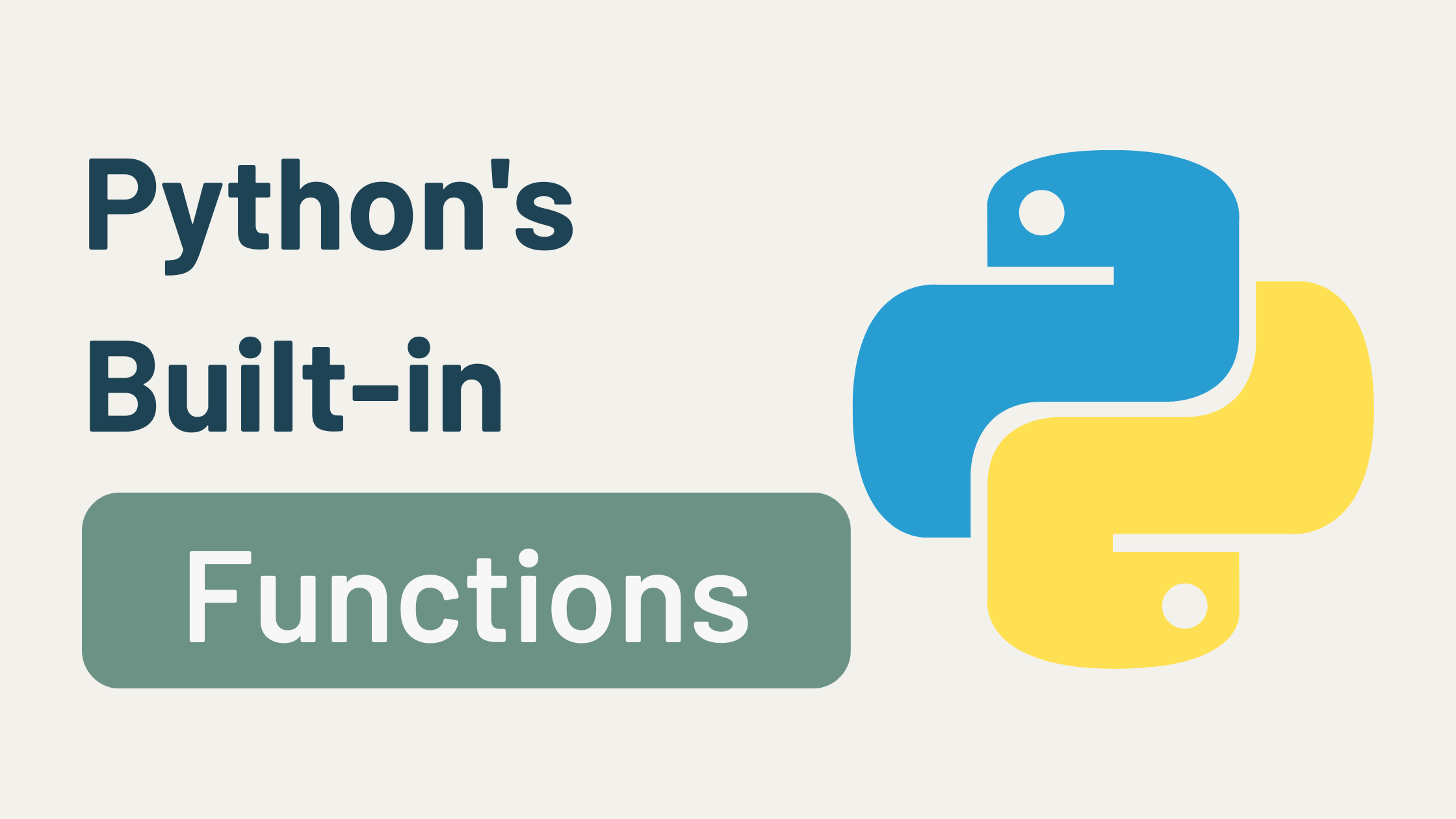My Experience with Python's Built-in Functions
 Fanny Nyayic
Fanny Nyayic
Python is often praised for its simplicity and readability, making it an ideal choice for beginners and experienced programmers alike.
One of the aspects that makes Python so accessible and powerful is its extensive collection of built-in functions.
As I embarked on my journey to learn Python programming, I quickly discovered that these built-in functions are not just convenient but also essential tools that can significantly enhance productivity and streamline the coding process.
In this article, I'll share my experience with Python's built-in functions and highlight some of the most useful ones I've encountered so far.
The Magic of Built-in Functions
Built-in functions are functions that are always available in Python without the need to import any additional modules.
They cover a wide range of tasks, from basic operations like printing and summing numbers to more complex tasks like sorting lists and handling file input/output. These functions are designed to be intuitive and efficient, allowing programmers to accomplish common tasks with minimal code.
print()
One of the first built-in functions I encountered was print(). It may seem trivial, but print() is incredibly versatile and useful for debugging and displaying output.
Whether I'm working on a simple script or a more complex project, print() helps me understand what's happening in my code.
print("Hello, World!")
This simple line of code outputs the text "Hello, World!" to the console, providing instant feedback and making it easier to track the flow of the program.
len()
Another indispensable function is len(), which returns the length of an object, such as a string, list, or dictionary. It's especially useful for iterating over collections and performing operations based on their size.
my_list = [1, 2, 3, 4, 5]
print(len(my_list)) # Output: 5
With len(), I can quickly determine the number of elements in a list or characters in a string, simplifying tasks like validation and iteration.
sum()
As I delved deeper into Python, I frequently encountered the need to calculate the sum of a list of numbers. The sum() function made this task incredibly straightforward.
numbers = [1, 2, 3, 4, 5]
total = sum(numbers)
print(total) # Output: 15
By passing a list of numbers to sum(), I can obtain their total in a single line of code, eliminating the need for manual loops and calculations.
sorted()
Sorting data is a common requirement in many applications, and Python's sorted() function provides an easy and efficient way to sort lists and other iterable objects.
unsorted_list = [3, 1, 4, 1, 5, 9, 2, 6, 5]
sorted_list = sorted(unsorted_list)
print(sorted_list) # Output: [1, 1, 2, 3, 4, 5, 5, 6, 9]
With sorted(), I can quickly sort lists without needing to implement sorting algorithms manually, saving time and effort.
enumerate()
The enumerate() function became a valuable tool when I needed to loop over a list and access both the index and the value of each element. This function simplifies the process and makes the code more readable.
fruits = ['apple', 'banana', 'cherry']
for index, fruit in enumerate(fruits):
print(f"Index {index}: {fruit}")
This code snippet outputs the index and value of each element in the fruits list, making it easier to perform operations based on the element's position.
range()
Looping a specific number of times is a common requirement, and the range() function provides a convenient way to generate a sequence of numbers.
for i in range(5):
print(i)
The range() function generates numbers from 0 to 4, making it easy to create loops that iterate a specified number of times.
max() and min()
Finding the maximum or minimum value in a list is a frequent task, and Python's max() and min() functions handle this effortlessly.
numbers = [10, 20, 30, 40, 50]
print(max(numbers)) # Output: 50
print(min(numbers)) # Output: 10
With max() and min(), I can quickly identify the largest and smallest values in a collection, simplifying tasks like data analysis and validation.
input()
Interacting with users is an essential part of many programs, and the input() function allows me to capture user input easily.
name = input("Enter your name: ")
print(f"Hello, {name}!")
This code snippet prompts the user to enter their name and then greets them with a personalized message. input() makes it simple to gather user data and incorporate it into the program.
open()
Handling files is a common requirement, and Python's open() function provides a straightforward way to work with files for reading and writing.
with open('example.txt', 'r') as file:
content = file.read()
print(content)
Using the open() function with a context manager (with statement) ensures that the file is properly closed after its contents are read, preventing potential issues like file corruption.
Conclusion
Python's built-in functions have been invaluable in my learning journey. They offer a wide range of functionality, making it easier to perform common tasks efficiently and with minimal code.
By leveraging these built-in functions, I've been able to focus more on solving problems and building projects rather than getting bogged down by low-level implementation details.
Subscribe to my newsletter
Read articles from Fanny Nyayic directly inside your inbox. Subscribe to the newsletter, and don't miss out.
Written by

Fanny Nyayic
Fanny Nyayic
a passionate web developer, tech writer, open-source contributor & a life long learner.